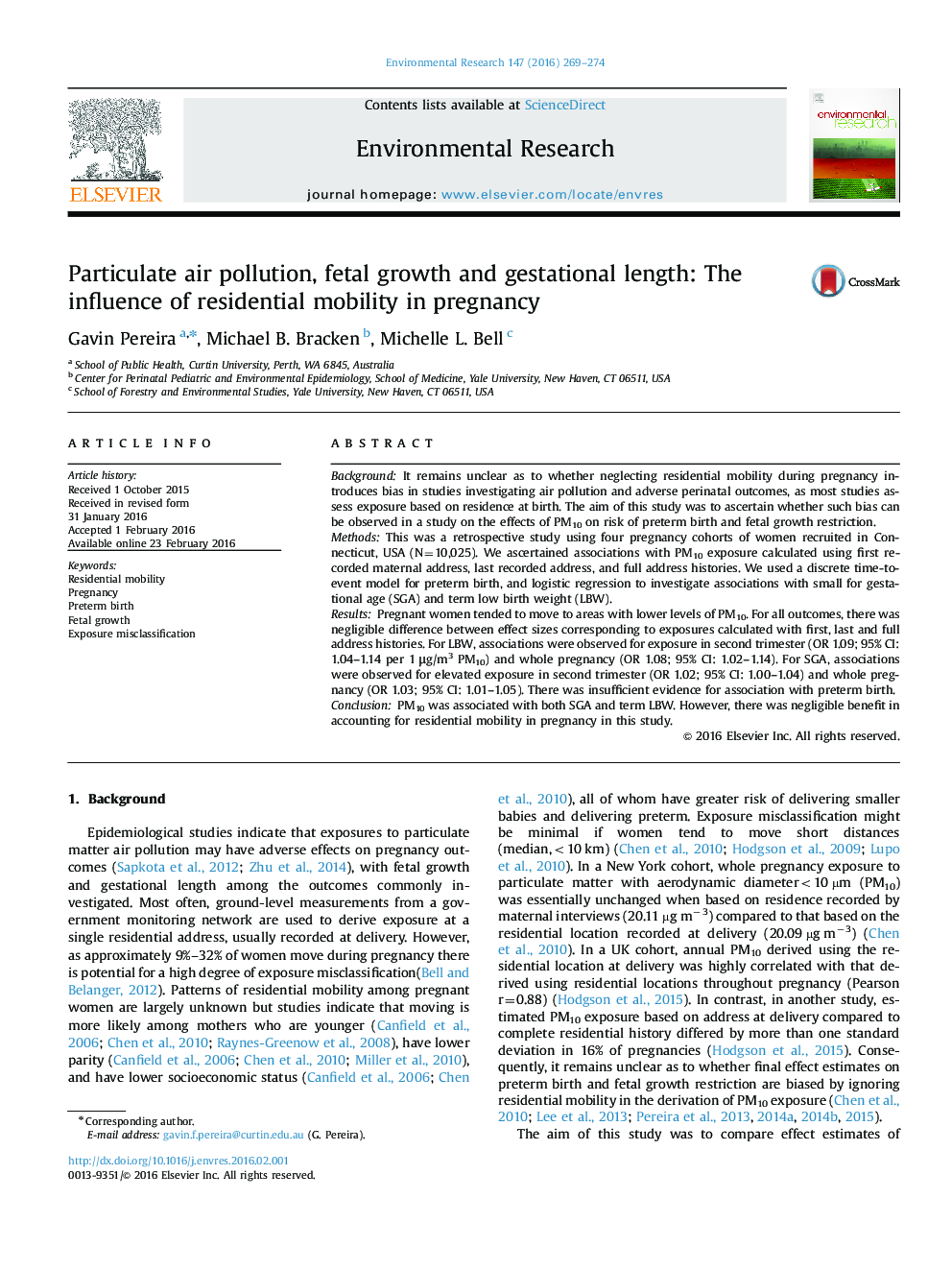| کد مقاله | کد نشریه | سال انتشار | مقاله انگلیسی | نسخه تمام متن |
|---|---|---|---|---|
| 6351658 | 1622556 | 2016 | 6 صفحه PDF | دانلود رایگان |
- PM10 exposure was associated with risk of low birth weight and small for gestational age, but not preterm birth.
- Effect estimates did not differ after accounting for residential mobility in pregnancy.
- Women who moved during pregnancy tended to move to areas with lower levels of PM10.
- Exposure assessment and buffer size influenced estimates more than mobility.
BackgroundIt remains unclear as to whether neglecting residential mobility during pregnancy introduces bias in studies investigating air pollution and adverse perinatal outcomes, as most studies assess exposure based on residence at birth. The aim of this study was to ascertain whether such bias can be observed in a study on the effects of PM10 on risk of preterm birth and fetal growth restriction.MethodsThis was a retrospective study using four pregnancy cohorts of women recruited in Connecticut, USA (N=10,025). We ascertained associations with PM10 exposure calculated using first recorded maternal address, last recorded address, and full address histories. We used a discrete time-to-event model for preterm birth, and logistic regression to investigate associations with small for gestational age (SGA) and term low birth weight (LBW).ResultsPregnant women tended to move to areas with lower levels of PM10. For all outcomes, there was negligible difference between effect sizes corresponding to exposures calculated with first, last and full address histories. For LBW, associations were observed for exposure in second trimester (OR 1.09; 95% CI: 1.04-1.14 per 1 μg/m3 PM10) and whole pregnancy (OR 1.08; 95% CI: 1.02-1.14). For SGA, associations were observed for elevated exposure in second trimester (OR 1.02; 95% CI: 1.00-1.04) and whole pregnancy (OR 1.03; 95% CI: 1.01-1.05). There was insufficient evidence for association with preterm birth.ConclusionPM10 was associated with both SGA and term LBW. However, there was negligible benefit in accounting for residential mobility in pregnancy in this study.
Journal: Environmental Research - Volume 147, May 2016, Pages 269-274
